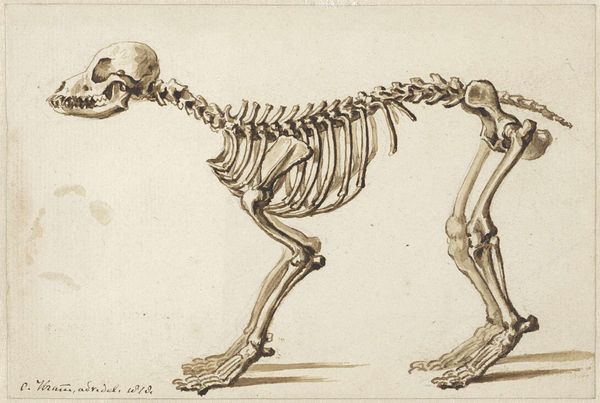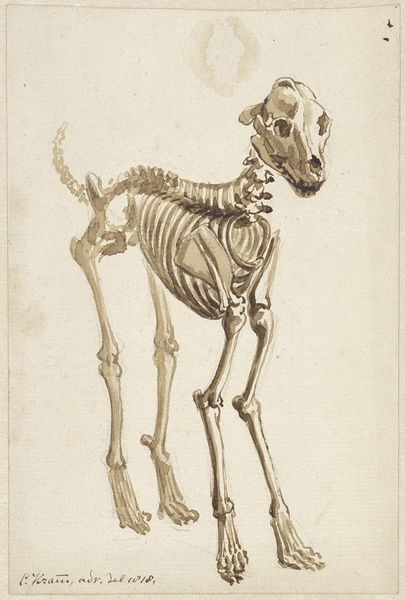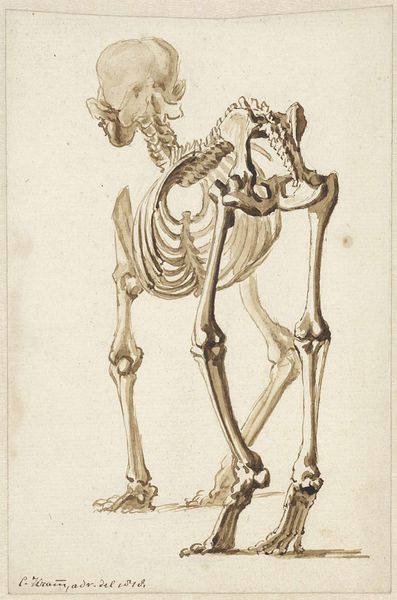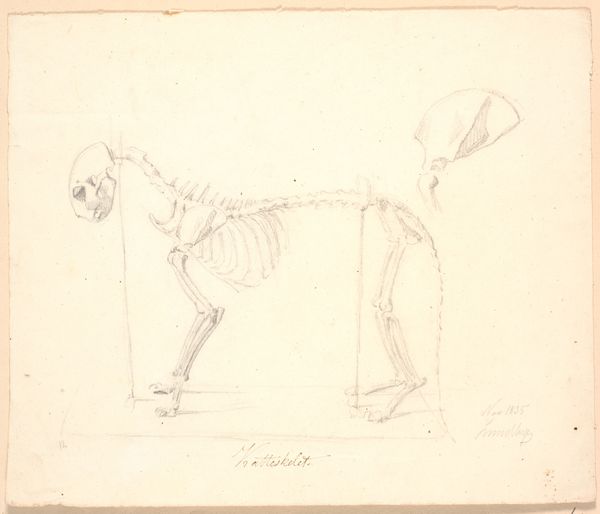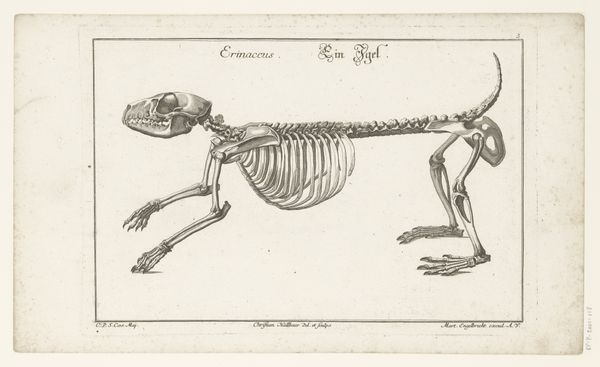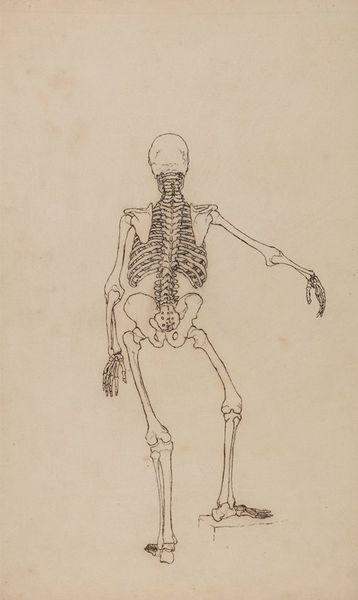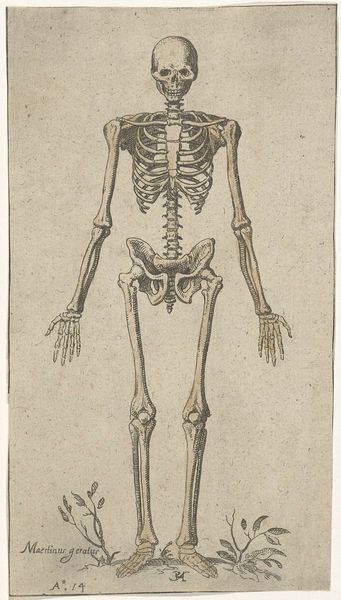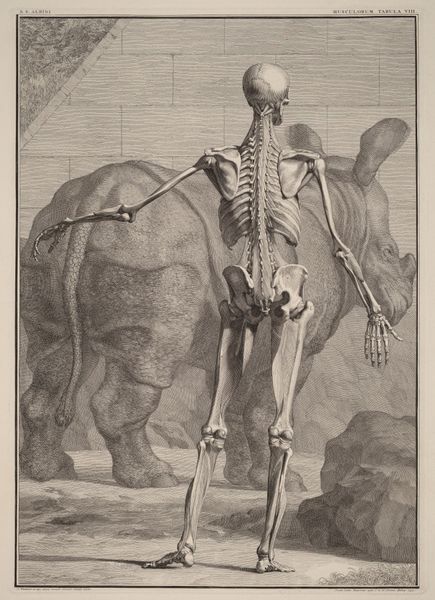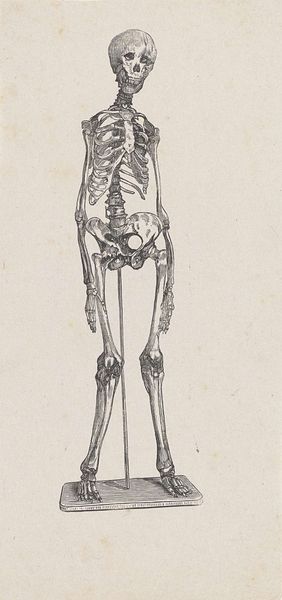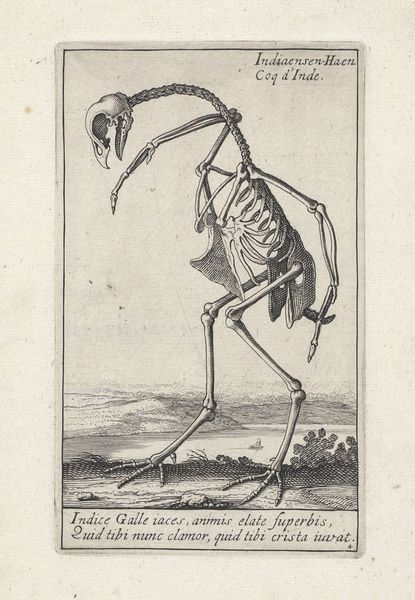
drawing, ink
#
portrait
#
drawing
#
animal
#
pencil sketch
#
dog
#
landscape
#
ink
#
watercolour illustration
#
academic-art
#
watercolor
#
realism
Dimensions: height 116 mm, width 174 mm
Copyright: Rijks Museum: Open Domain
Editor: Here we have "Skelet van een hond van opzij," or "Skeleton of a dog from the side," a drawing created sometime between 1797 and 1875 by Christiaan Kramm. It's rendered in ink, pencil, and watercolor. The overall mood is somber and analytical. What strikes you most about this work? Curator: What I see is the relationship between science, art, and power. In this era, scientific advancement was frequently used to justify existing social hierarchies, even the subjugation of marginalized communities. The hyper-focus on anatomical detail, while seemingly objective, existed within a framework of categorizing and ordering the natural world, sometimes in ways that mirrored or reinforced societal biases. Think about the use of physiognomy and phrenology in this period, pseudo-sciences that attempted to link physical characteristics to moral character and intelligence. Does knowing that change your reading of the image at all? Editor: It does. I initially saw it as simply an anatomical study. Now, I can't help but think about how even seemingly neutral scientific drawings can reflect power dynamics and assumptions of the time. It makes me question the intent and context of such a precise depiction. Curator: Exactly! Consider also who had access to education and scientific knowledge at that time. Artists creating these studies were often part of a privileged class, shaping narratives through their specific lens. And whose skeletons are studied, and whose are ignored? Editor: It's a sobering thought, to realize that something as clinical as a skeletal drawing can carry such weight. I will definitely look at art differently. Thanks for the insightful perspective. Curator: It's a crucial point: that visual culture doesn’t exist in a vacuum, it's deeply entwined with societal structures and belief systems. And it pushes me to keep interrogating my own perspective, as well.
Comments
No comments
Be the first to comment and join the conversation on the ultimate creative platform.
